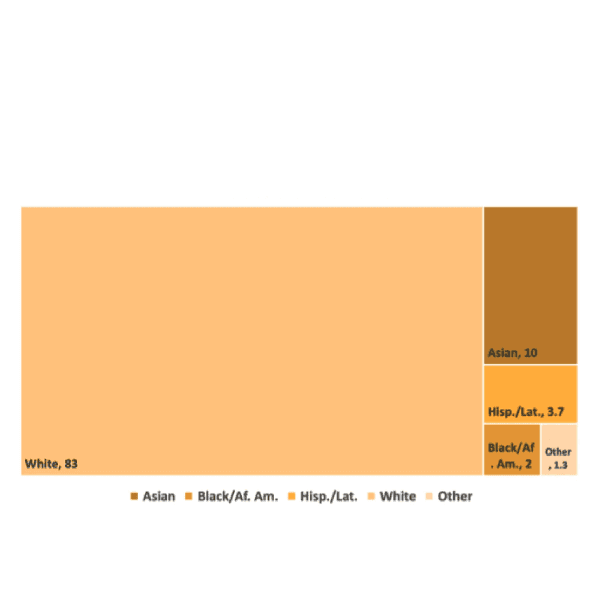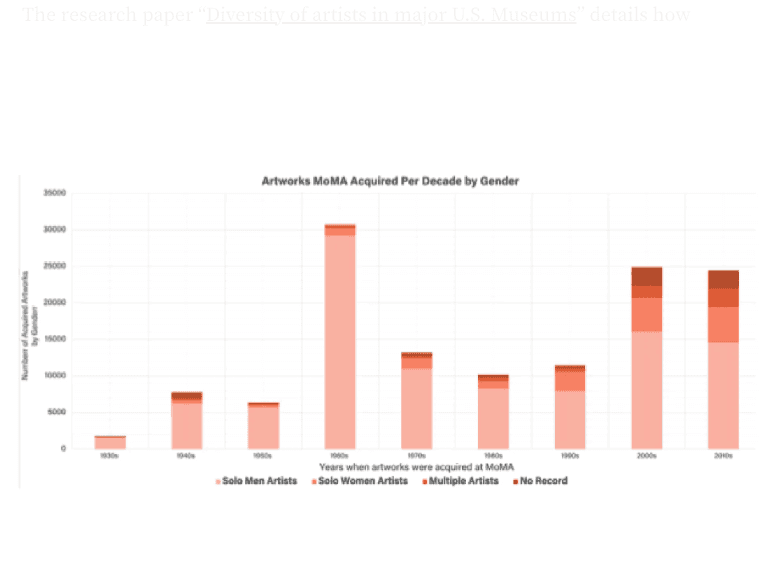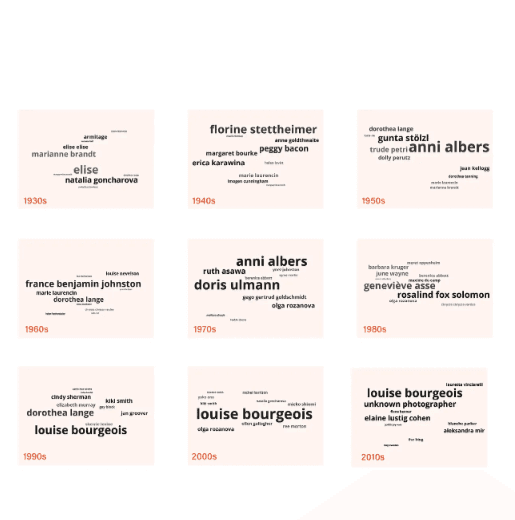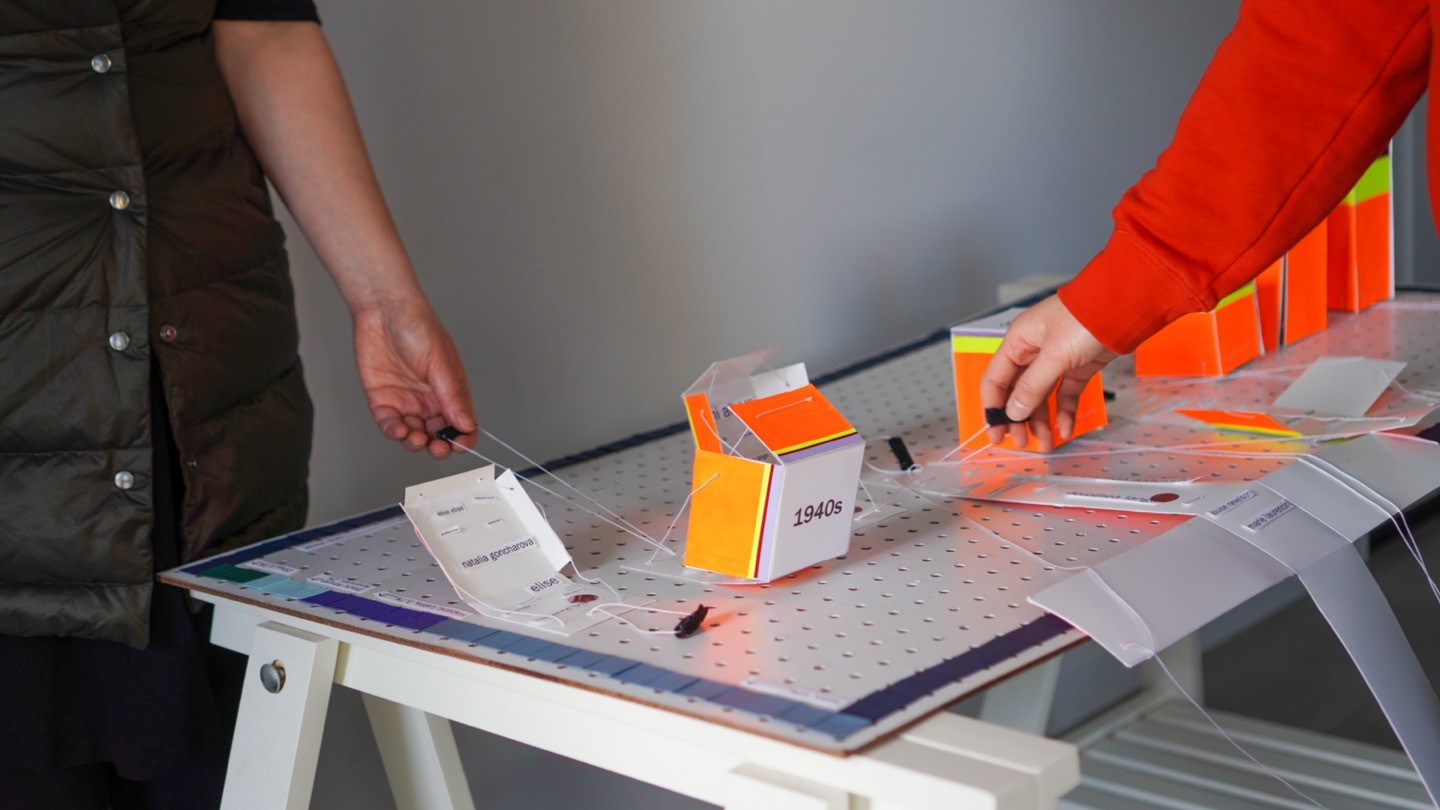Who Matters?
Background
In my Data Visualization course, I was tasked to design and prototype a creative visualization based on an existing cultural collection.
Interactive installation that invites viewers to reflect on their knowledge of female artists while also visualizing the gender and ethnicities of artists showcased at MoMA.
My Role
Synthesizing data, ideating range of interactive experiences, prototyping concept
Timeline
8 weeks
In a recent class project, I used MoMA’s collection dataset published on GitHub to create an interactive installation that reveals the dominant narratives being amplified. I break down the gender and ethnicities of the 15,222 records of artists who MoMA acquired artwork from between the years of 1930–2019. How can we break down MoMA’s collection into its parts to critique the dominant narrative being told?
Keeping Institutions Accountable
In September 2019, MoMA opened up for the first time after an intense renovation. The goal: expand the museum and put “Picasso and Monet next to more recent, diverse artists.” This has become a common forward-thinking message being sent by most institutions and companies. The conversation of diversity and inclusion is welcomed, but how rarely do we actively create substantial impact through actions.
The research paper “Diversity of artists in major U.S. Museums” details how the Association of Art Museum Directors (AAMD) found that 72% of staff at its member institutions identify as white. They also revealed a gender gap in leadership positions where 60% of the museum staff are women but only 43% of directorships are held by women.
Art institutions are a specific example of systems that once ruthlessly enabled standards aligned with the white dominant culture. More specifically, the evaluation of artworks through the lens of European Modernism. Now the fear is being criticized for its exclusive and pretentious white-box tone. MoMA is trying to rethink the ways we talk about and evaluate artworks. I wanted to create an experience that helps illustrate the dominant stories being featured and ones that are missing entirely.
Scrapping the dataset



Ethnicity
First, I visualized the percentage of different ethnicities of artists at MoMA using data from the paper “Diversity of artists in major U.S. Museums” (Topez, Chad M et al).
Gender
I used MoMA’s collection data to distill the percentages of different genders of artists for every artwork acquired per decade starting from 1930 to 2019. I used color to visualize these percentages.
Top 10 Female Artists
From there, I focused on the top 10 female artists who had the most artwork acquired. This is represented using a visual word cloud where size of name correlates to number of acquired artworks.
Embodying Data Through an Experience



Step 1: Place as many sticker dots near the names you recognize.
Scattered on each paper-net are the names of the top 10 female artists who have had the most artwork acquired by MoMA for a specific decade. The larger the name, the more artwork of theirs has been acquired.
Step 2: Pull back the black handles.
The paper-net forms into a 3-dimensional shape. The percentage of male, female, multiple artists and no record found regarding gender per decade will be revealed.
Step 3: Take a step back and view the entire board.
The perimeter of the pegboard is color-coded with the percentage of each ethnicity. As you step back and walk around the board the colors that dominate the 3D bar graphs and perimeter of the board reveal which groups dominant the museum’s collection.

Insights
The most recognizable female artists will emerge over time. I completed the sticker activity with people in my household. We placed stickers next to the female artists we recognized. The larger the name on the board (more artwork acquired) we were more likely to know their work. This also prompts reflection on which names are missing.
MoMA acquired work from predominantly male and caucasian artists. The majority of artists who MoMA acquired artwork from since 1930 through 2019 have been male. In more recent decades, there has been a slight increase in female artists.
It took the longest to go around the dark navy blue border (representing white artists). Artworks by Black and Latino/Latinx artists are represented significantly less at MoMA. The large majority of artists are white.
The installation’s interactive component sparks conversation among participants. As I demoed the installation, the activities prompted us to reflect on our initial reactions. We asked each other how we knew about a specific female artist and discussed how surprised (or unsurprised) we were at the gaps in diversity at MoMA. Along with reflecting on our role in the art industry.
Role of Art in an Increasingly Loud World
Museums provide a space for stories. With contemporary art, there’s a loose grip on what passes as “art.” This welcomes abstract and muddled in interpretation performances, installations, paintings, mixed media, sculptures, etc. It’s often a shared collective understanding of cultures and societal issues that allow us to relate to certain artworks.
From the content on our screens to conversations with others, there’s an increasingly divisive and politically raged background noise. We benefit from engaging with artworks by artists from all walks of life who have stories that diverge from our narratives. It provides itself an opportunity for reflection and conversation.